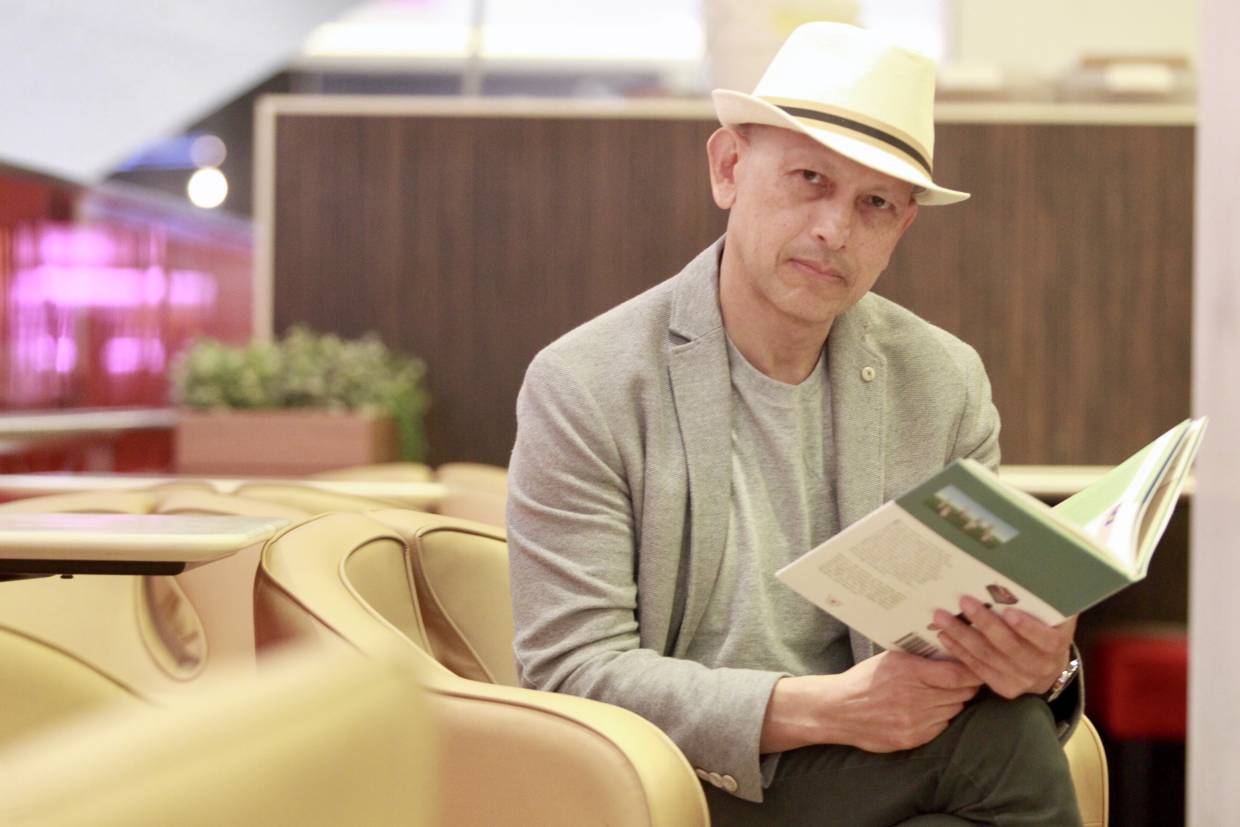By Fatihah Zaini
An article written by Elena Koshy titled ˜Prince of darkness: Malaysian horror doyen sheds light on his dark stories published in New Straits Times recently has caught my attention.
It has all the elements that a good feature should have. Firstly, the title intrigues the audience to ask: œWho is Malaysian prince of darkness (Tunku Halim)?, œWhat type of dark stories that could have possibly driven him to write such horror? Now this alone leads readers to be interested to find out further and to continue reading the article.
Then again, Elena strikes off with an interesting lead with the words such as ˜loss and ˜bleakness. These words have brought a flow to the whole central idea of the article that is, past dark stories. Furthermore, Elena has succeeded in describing vividly the looks of Tunku Halim and his expressions while doing the interview.
Below are some excerpts taken from the article:
It’s a Zoom call because the writer is ensconced up north in Penang, living out the lockdown in relative isolation. “I don’t mind it at all,” he protests, smiling. Being alone, he says, suits him. “I’m alone, but not lonely. There’s a big difference there.” He smiles benignly, eyes glinting behind his dark-rimmed spectacles.
He definitely suits the part of the solitary horror writer. It’s the head, of course. Entirely bald, aquiline nose, deep-set penetrating eyes “
This act of showing rather than telling, eases readers to imagine the images of Tunku Halim visibly. Besides, the article has shown an evidence of an ample amount of quotations in which readers are able to make sense of what his dark stories were all about and how he felt during that particular time of his life.
Does he still keep the poetic diaries of his youth? His face shutters briefly as he sits back in silence. “Unfortunately, I got rid of a lot of things,” he confides with a remorseful smile. “I try to live a minimalist lifestyle.”
He sat alone in an empty house, going through remains of a life he made abroad. “My wife had left with the kids and she took whatever belongings she wanted. I was still left with a lot of stuff.” The memories were hard to deal with, as too the pain of letting go.
Elena also tells anecdotes like jokes. Here is an excerpt that portrays how she connects Tunku Halims sayings with a joke about satay.
He writes, he stresses, for the Malaysian reader. “I don’t write Malaysian stories for Westerners. I don’t have to explain what nasi lemak or satay is!” A chilling phrase from Dark Demon Rising comes to mind: “The words too much satay, too much satay scraped like a bleeding finger on my brain.” Strange as the sentence may sound, it gives me an almost visceral chill every time I look at satay these days!
Nevertheless, what makes the article a good one is when Elena addresses readers as ˜You. Using a second-person is as if, the writer is talking directly to readers and this could lead them feeling more connected with the story, though it is not really about them. She uses this type of approach in the first part of her article:
But maybe the dead have feelings too. That, when you think about it, is the premise of a great many ghost stories..
The highlighted sentence, personally, as a reader, caught my attention to which for a second I thought that ˜maybe the dead do have feelings. Relevant to the story, the journalist provides a clear background of who is Tunku Halim in the interview. From who he was back in school to who he is now without his wife and children.
The scion of the Negri Sembilan royal family, Tunku Halim stops short of mentioning his aristocratic ties (he’s the grandson of Tuanku Abdul Rahman, Malaysia’s first King), except that he was shunted to a boarding school at age 13.
He became a different man after the divorce. “The pre-divorce guy and the post-divorce guy are very different,” he reveals, wincing slightly. By surrendering to the catharsis of experiencing any feelings and memories he had tied to his belongings, he has opened himself up to healing.
Since the article is mostly based on the interview conducted between the journalist and Tunku Halim, it has shown great interviewing skills.
First of all, Elena leaves a room for changes in her questions followed by the interviewees unexpected answers regarding his past. What I can see, is that every time Tunku Halim attends to her question, she digs deeper by asking more on relevant facts pertaining to his answers before.
Moreover, the article seems like a conversation between old friends, casually talking about life. It is like reading a novel on the most prominent Malaysian author.
To be noted, Elena made a thorough background check on Tunku Halim, especially on his books and awards. These details had made it easier for the journalist to interview him in a more comfortable manner.
All in all, the article is a fun and an exciting one to read as I think it encompasses much of great feature writing techniques. Without a doubt, it got me through the title! ***
(This article is written as part of individual assignment series for Feature Writing class)
